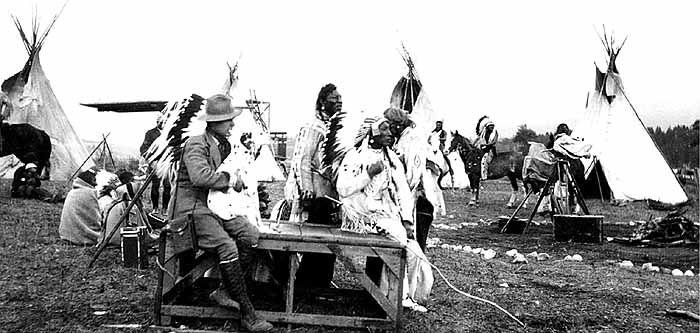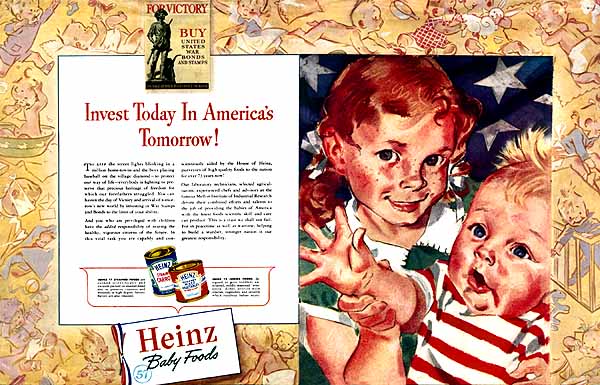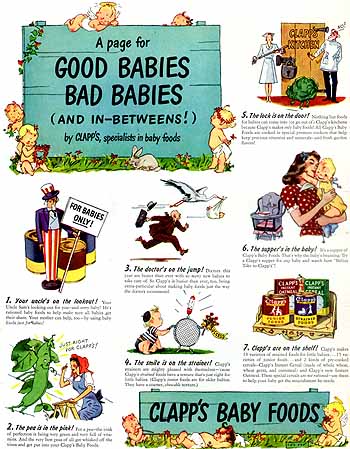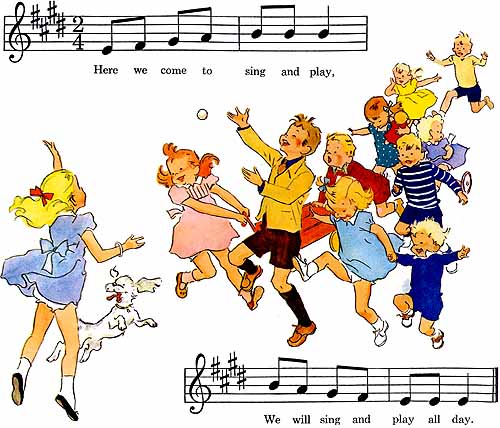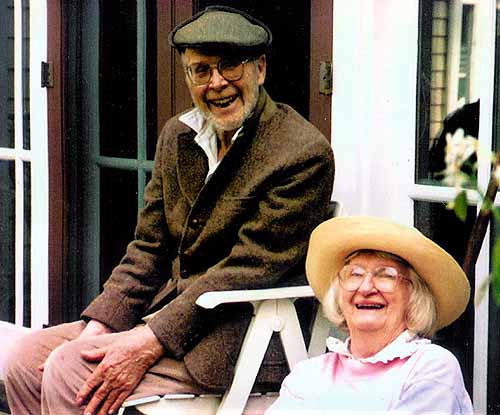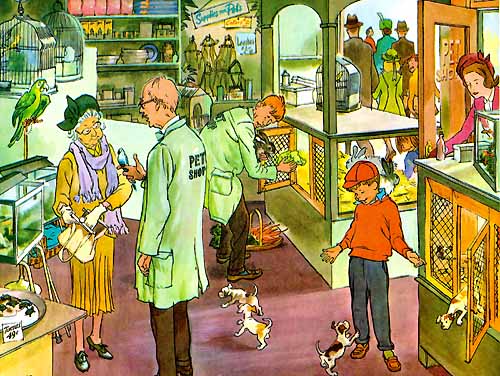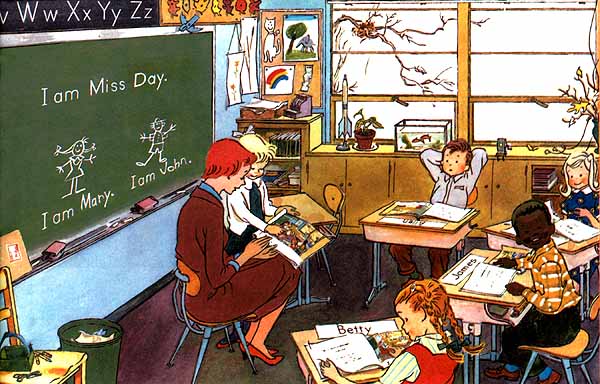
|
Copyrighted Material -CLICK for information |
|
Back |
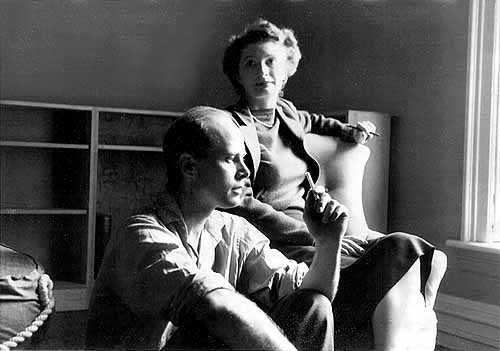
Charles and Dorothea Fox (c.1938) Fox - 001 |
Charles and
Dorothea Warren Fox
(1902 - 1996 and 1914 - 1999 )
By Rebecca Fox Rice |
| Charles Fox Charles Fox, illustrator and commercial artist was born in Benton Harbor, Michigan on April 3, 1902. His parents, of German descent, ran a small grocery. School was not a priority for Charles. When sent to a neighboring town to stay with another family and attend high school, he simply walked home. There were two seemingly insignificant events around then that helped shape his goals. He was given a stack of English magazines in payment for assisting a gentleman whose car had broken down in front of his parent’s store. The style and pageantry he found on those pages made a lasting impact. He caught a glimpse of a world beyond his Michigan home and yearned to be part of it. Also, he found book a by George Catlin in the local library. This began a fascination with the American Indian that stayed with him his entire life. He loved to draw and often went off by himself to draw cowboys, Indians, and horses. At 17, young Chuck went to Chicago to attend the Audubon Tyler School of Art. He then took a job with Lord & Thomas Advertising. By 19 he was working as a sketch man for N.W. Ayer & Son, an advertising agency in Philadelphia. Also working there was a copywriter named Raymond Rubicam. In 1923 Raymond Rubicam left N.W. Ayer & Son and together with an account executive named John Orr Young formed an agency of their own. Charles Fox was one of a dozen young, creative artists who went with Raymond Rubicam to New York to become the nucleus of this new agency, Young & Rubicam. Fox drew ads for such Young & Rubicam clients as Jell-O, Postum, Vermont Maid Syrup, General Foods, and R.J. Reynolds. |
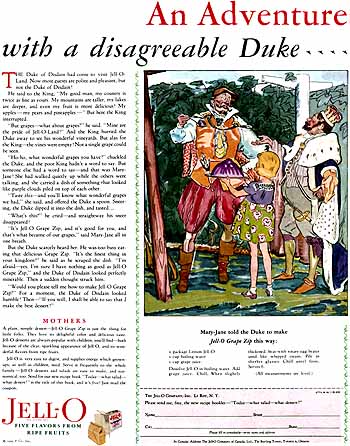
Charles Fox: Jell-O, "An Adventure with a disagreeable Duke" (1929) Fox - 002 |
| Charles left Young & Rubicam in 1929 and struck out on an automobile trip across the western United States to pursue his love of the wild west and the American Indian. |
|
Charles visits a Montana movie set (1929) Fox - 003 |
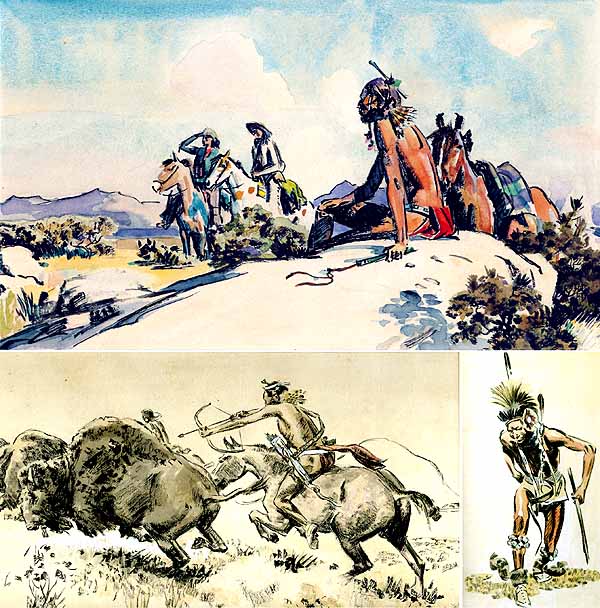
Charles Fox: Three Western studies (1950s) Fox - 004 |
| On his return to New York, much of his work began to take on a more adventurous aspect. His illustrations of tales of the western frontier and the French Foreign Legion appeared in such pulp fiction as Adventure Magazine and Blue Book. He was even given an honorary membership card by the Veterans of the French Foreign Legion. |
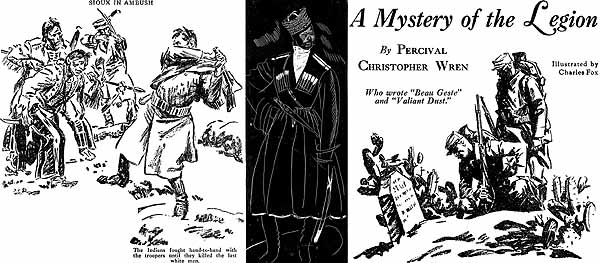
Charles Fox: Left and Right: Blue Book Magazine; "Sioux in Ambush" |
| Dorothea Warren Fox Dorothea wrote poetry and drew pictures from the time she could walk. Forced to leave college due to The Depression at age nineteen, she financed a move to New York by drawing a lightning bolt figure for family friend Ashton Collins of the Alabama Power Company. This little cartoon character became Reddy Kilowatt, and launched her career in illustration and commercial art. Soon after arriving in the big city of New York, she started sitting in barber shops and sketching children getting hair cuts. She took a job at Best & Co decorating their shop windows. Slowly she started getting spots for McCalls, Parents Magazine and Good Housekeeping. In the spring of 1935, Dorothea began working for a small advertising studio, Ehrlich and Kenne. They would find commissions for her and take a cut of the proceeds, but she could also continue to accept jobs she found on her own. There she met Charles Fox. He was a handsome and dashing illustrator and commercial artist who often took long liquid lunches, then worked all night in the empty studio to meet his deadlines. He had just returned from a year long sabbatical on St. Lucia in the West Indies and was trying to apply himself again to the mundane task of making money. |
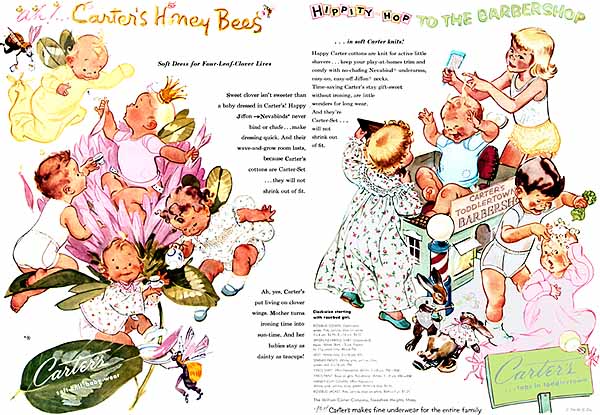
Dorothea Fox: ads for Carter's (1953) Fox - 006 |
|
Charles and Dorothea Fox: Heinz Baby Foods (1942) Fox - 007 |
| “He is the crown prince of the place and slops around in dirty white ducks and beach shoes and demands anything he wants and gets it. Everyone is a little in love with him – everyone he meets.”
Dorothea Warren, 1935 |
| Theirs was a long and tumultuous courtship, the young, talented, southern society girl and the irresponsible but glamorous artist.
Chuck, almost immediately, began teaching Dorothea the techniques of the trade and she quickly improved her skills. They each had very different styles, yet began to blend their talents to the benefit of both. New York City in the 1930’s was exciting and full of talented and fascinating people. Chuck and Dorothea lived right in the center of it all. Chuck started his own studio and drew ads for such companies as Contemps Fashions, Jarman Shoes, Manor Born Clothes, Arrow Shirts, Weber and Heilbroner, and Ludwig Baumann. His work appeared in Saturday Evening Post, Esquire, Colliers, Woman’s Home Companion, Junior Home Magazine, Youth’s Companion, as well as most of the major New York newspapers |
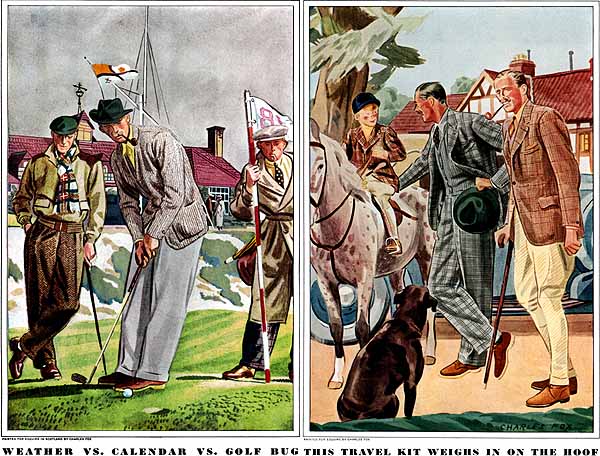
Charles Fox: Esquire, Fashion Pages (1930s) Fox - 008 |
| Dorothea became known for animated families and cute babies that appeared in Family Circle, Life, Saturday Evening Post, Baby Talk, Two to Six, Women’s Home Companion, Ladies Home Journal, Parents, McCalls and Good Housekeeping magazines. She also illustrated numerous books. Among them was Marian – Martha by Lucile Fargo, Penny Marsh, Public Health Nurse series by Dorothy Deming, We All Go Away by Lavinia Davis, Two For The Money by Eleanor Carroll and several by James Ellenwood including There’s No Place Like Home and It Runs In the Family. |
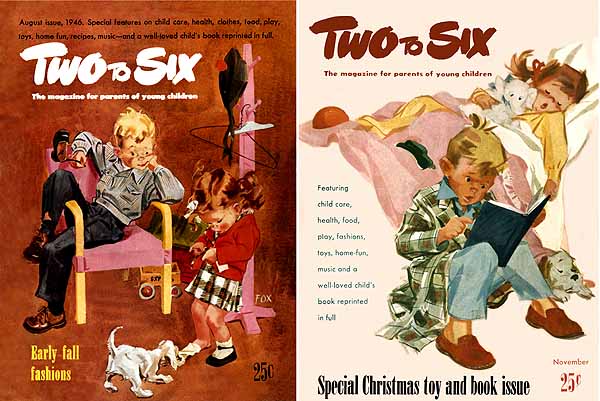
Dorothea Fox: Two to Six magazine covers (1946) Fox - 009 |
|
Dorothea Fox: Clapp's Baby Foods (both 1943) Fox - 010 |
| They were married in 1940 and bought a ramshackle farmhouse in New Fairfield, Connecticut. It was an idyllic location with a brook and pond in front, a wooded mountain behind, and a large shorefront on a secluded cove of Candlewood Lake. From there, artwork was delivered to their agent, Tom Holloway, by the conductor on the early morning commuter train to New York City.
Soon after the move to Connecticut, Dorothea illustrated a new book by Dr. Benjamin Spock, The Common Sense Book of Baby and Child Care. This quickly became a best seller and provided a steady stream of royalty checks to help support their growing family. Dr. Spock’s book and Carter Baby clothes advertisements provided the basis for the family income for many years. |
| “So I drew cute babies for years and years…Dr. Spock, Carter Baby Clothes, Heinz, Beechnut, Clapps baby food, L’il Ivory. We bought a tumbledown house in the country. We had two puppies who needed a place to run (a policeman wouldn’t let them chase squirrels in Central Park) and World War II was looming. My husband was also a free lance artist. He drew men’s fashions for Esquire and Kramer Tobias. We had found a railroad conductor who would take our work into New York on his train. Money would come back in the mail and we began to have real babies of our own, three boys and a girl and a few cats.”
Dorothea Warren |
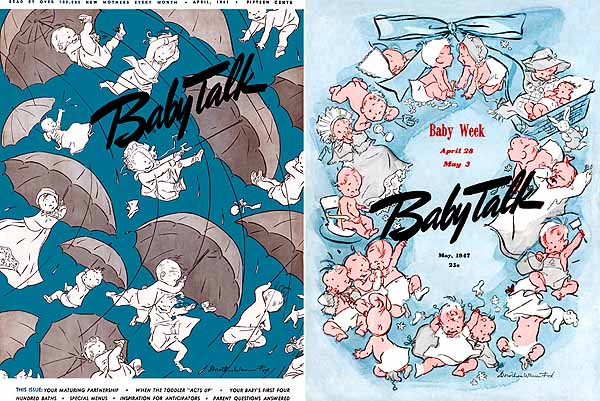
Dorothea Fox: BabyTalk (1941 and 1947) Fox - 011 |
|
Charles and Dorothea Fox: from "Sing and Play" (1949) Fox - 012 |
| The camera figured prominently in their careers. From the beginning, they took photographs of themselves and the people around them to use as models for their artwork. |
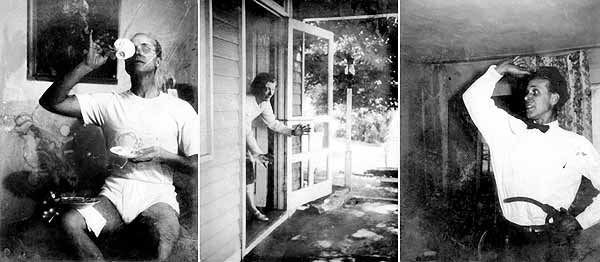
The artists as models (1950s) Fox - 013 |
| “From poor, inert representations of life such as these, Dottie and I fashioned those blazing and intense facets of truth known as ‘commercial art’.” “Another day, another pose – followed by another night of grinding drawing.” “Another pose, another photo, another drawing, another dollar.” Charles Fox |
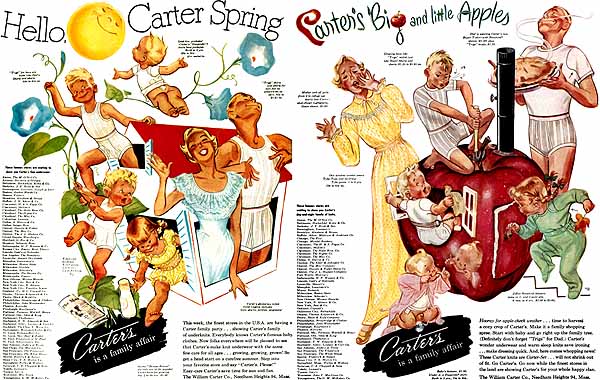
Charles and Dorothea Fox: ads for Carter's (1950s) Fox - 014 |
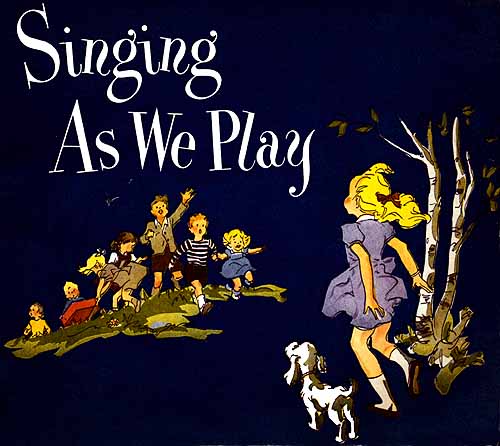
Charles and Dorothea Fox: Singing as we Play (1949) Fox - 015 |
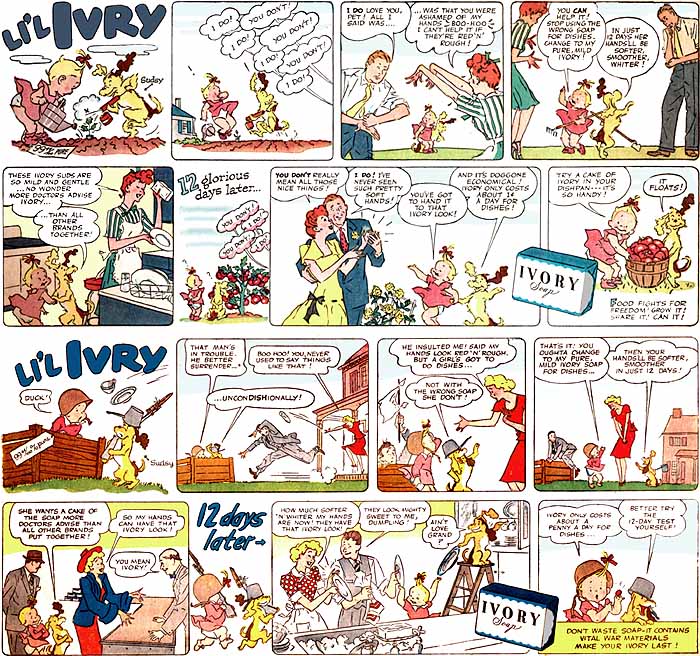
Charles and Dorothea Fox: Ivory Soap (1945) Fox - 016 |
| Later on, in the early 1960’s, advertisers began using photographs for more and more of their ads and the demand for commercial artists dwindled. At the same time there were problems developing of a more personal sort. |
| “It wasn’t a happy ever after story for us. My husband found that he was too busy clearing brush and cutting down trees and building stone walls on our property to be able to do drawings for Esquire magazine or Kramer Tobias. So he developed what is called an ‘artist’s block’ and found that he couldn’t do those things at all.”
Dorothea Fox |
| Dorothea never gave up on anything. She found that Chuck would contribute his talent to her art work. He would draw the goat and cart and she would add the cute babies riding in it. In this way they continued to produce together under her name.
Chuck continued to draw on his own when he wasn’t building stone walls or clearing brush. His subject matter was American Indians, military men in fancy dress uniforms and, always, horses. These drawings were mostly in the form of doodles. He would work for hours on a painting and begin to fret and agonize that it was not as good as he felt it should be. Just before he was ready to tear it to shreds, Dorothea would snatch it up and put it away. The attic was filled with his unfinished sketches. The bills continued to pile up and the commissions continued to dwindle. Dorothea looked for other ways to turn their talents into food on the table. She hit upon the idea of doing ceramic babies. She could create them in little shirts and gowns such as the company wanted, and they would use photographs of her ceramic babies as the advertisements. She took some lessons and bought a kiln and she and Chuck began producing ceramic pieces. This idea turned out to be impractical. It took much too long to create her ceramic masterpieces for them to be of any use. |
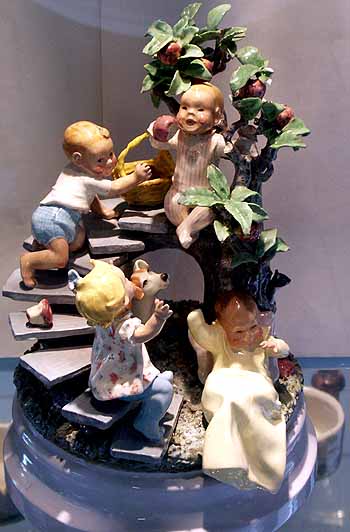
Charles and Dorothea Fox: Ceramic (1960s) Fox - 017 |
| One fall morning, while looking out across the brook at the now empty tree house that her children had built that summer, she began to write a verse about a funny old lady named Miss Twiggley who lived in a tree house. This became a children’s book, Miss Twiggley’s Tree. She followed Miss Twiggley with another book, Follow Me The Leader, that was chosen as a book-of-the-month for a Parent’s Magazine Book Club. The checks began to come in again. Miss Twiggley's Tree has been made into a claymation video (Bix-Pix Entertainment) and the book of the same name has been recently re-published by Purple House Press. |
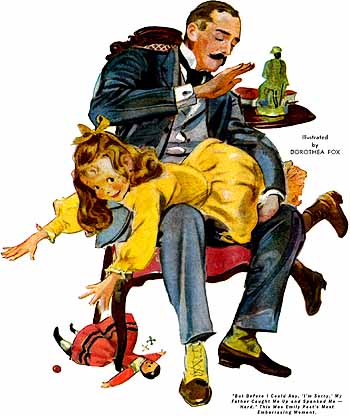
Dorothea Fox: American Weekly, Emily Post (1949) Fox - 018 |
| Chuck died at their home on New Years Day 1996. Dorothea died there on July 22, 1999. The beautiful home they created was sold, but the mountainside behind the house was donated to the New Fairfield Land Trust as the Sweetcake Mountain Preserve to be used by the public with hiking trails through the woods that both Chuck and Dorothea loved so much. There is also a memorial carved in a slab of granite deep in the woods to be found by who ever may pass by. |
|
Charles and Dorothea (1994) Fox - 019 |
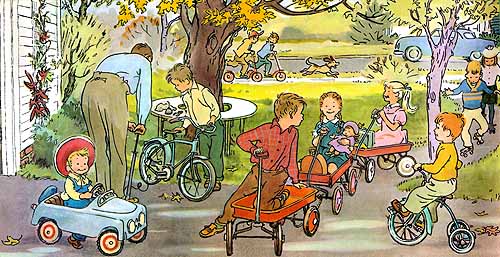
Charles and Dorothea Fox: Sidewalk Parade (1963) Fox - 020 |
|
Charles and Dorothea Fox: Elementary English (1963) Fox - 021 |
|
Charles and Dorothea Fox: Elementary English (1963) Fox - 023 |
